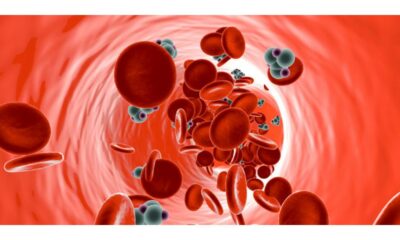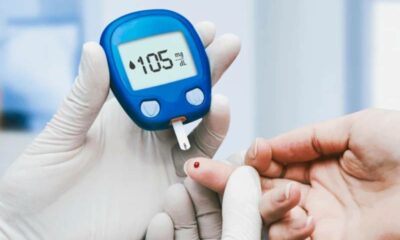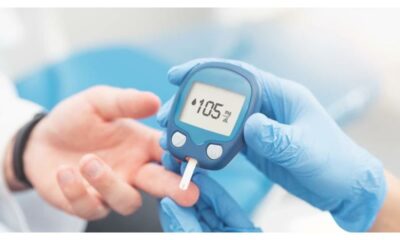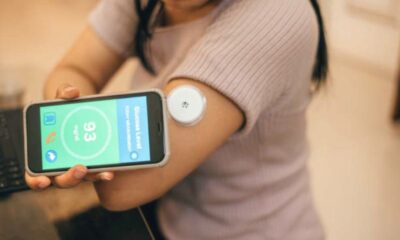Prediabetes, a crucial stage often referred to as “borderline diabetes,” acts as a silent warning sign. Blood sugar levels are elevated beyond normal but not yet high enough for a type 2 diabetes diagnosis. This window of opportunity empowers you to take action and prevent the progression to full-blown diabetes. This comprehensive guide delves into the key risk factors, unveils the diagnostic tests, and equips you with the knowledge to identify and address prediabetes effectively.
Unveiling the Landscape of Prediabetes
1.1. Understanding Prediabetes:
Prediabetes signifies impaired blood sugar control. Your body experiences difficulty processing glucose (sugar) efficiently, leading to elevated blood sugar levels. While not yet diabetes, it significantly increases your risk of developing the condition if left unaddressed.
1.2. The Silent Threat: Why Early Identification Matters
Prediabetes often progresses silently, with many individuals unaware of their elevated blood sugar levels. The crucial aspect lies in early identification. Taking proactive steps at this stage can significantly reduce your risk of developing type 2 diabetes, its associated complications, and improve your overall health.
Risk Factors: Unveiling Your Predisposition
Several factors influence your susceptibility to prediabetes. By understanding your risk profile, you can adopt preventive measures and mitigate the potential for progression.
2.1. Family History:
A family history of type 2 diabetes significantly increases your risk. If a parent or sibling has diabetes, you are more likely to develop it yourself.
2.2. Weight and Body Mass Index (BMI):
Carrying excess weight, particularly belly fat, contributes to insulin resistance, a hallmark of prediabetes. A BMI exceeding 25 indicates increased risk, and a BMI above 30 significantly elevates it.
2.3. Age:
The risk of prediabetes rises with age. As we age, our body’s ability to produce and utilize insulin can diminish.
2.4. Race and Ethnicity:
Certain ethnicities, including Hispanic/Latino, African American, Asian American, and Native American populations, have a higher risk of developing prediabetes and type 2 diabetes.
2.5. Physical Inactivity:
A sedentary lifestyle decreases insulin sensitivity and hinders your body’s ability to utilize glucose effectively.
2.6. Polycystic Ovary Syndrome (PCOS):
Women with PCOS are at a higher risk of developing prediabetes due to hormonal imbalances impacting insulin sensitivity.
2.7. Gestational Diabetes:
Having gestational diabetes, a condition marked by high blood sugar during pregnancy, increases your risk of developing type 2 diabetes later in life.
2.8. Impaired Fasting Glucose (IFG) or Impaired Glucose Tolerance (IGT):
These conditions, often identified through blood tests, can be early indicators of prediabetes.
Diagnostic Tests: Unveiling the Truth
Early detection is critical for effective management. Here’s an exploration of the diagnostic tests used to identify prediabetes:
3.1. Fasting Plasma Glucose (FPG) Test:
This blood test measures your blood sugar level after not eating for at least 8 hours (often overnight).
- Normal: Less than 100 mg/dL (milligrams per deciliter)
- Prediabetes: 100 to 125 mg/dL
- Diabetes: 126 mg/dL or higher (on two separate tests)
3.2. Hemoglobin A1c (HbA1c) Test:
This test reflects your average blood sugar control over the past 2-3 months. It measures the percentage of hemoglobin (a protein in red blood cells) that has bonded with glucose.
- Normal: Less than 5.7%
- Prediabetes: 5.7% to 6.4%
- Diabetes: 6.5% or higher
3.3. Oral Glucose Tolerance Test (OGTT):
This test involves drinking a sugary drink and measuring your blood sugar levels at specific intervals (usually fasting, 1 hour, and 2 hours after).
- Normal: Fasting < 100 mg/dL, 1-hour < 180 mg/dL, 2-hour < 140 mg/dL
- Prediabetes: Impaired Fasting Glucose (IFG) or Impaired Glucose Tolerance (IGT) criteria met
- Diabetes: Meets or exceeds diabetes criteria on both FPG and OGTT
3.4. Random Plasma Glucose (RPG) Test:
This blood test measures your blood sugar level at any time, regardless of when you last ate. While not a definitive diagnostic tool, it can be helpful if your blood sugar level is very high (above 200 mg/dL). However, a confirmatory test like FPG or OGTT is needed for a prediabetes or diabetes diagnosis.
Beyond the Diagnosis: Taking Action
A prediabetes diagnosis doesn’t have to be a life sentence. It’s a powerful opportunity to make positive lifestyle changes and prevent the progression to type 2 diabetes. Here’s what you can do:
4.1. Develop a Personalized Action Plan:
Work collaboratively with your doctor to create a personalized action plan that addresses your specific needs and risk factors. This plan may include dietary modifications, increased physical activity, weight management strategies, and stress management techniques.
4.2. Embrace Dietary Modifications:
Focus on a balanced diet rich in whole grains, fruits, vegetables, and lean protein sources. Limit processed foods, sugary drinks, and unhealthy fats. Consider consulting a registered dietitian for personalized guidance.
4.3. Increase Physical Activity:
Aim for at least 150 minutes of moderate-intensity exercise or 75 minutes of vigorous-intensity exercise per week. Regular physical activity enhances insulin sensitivity and helps your body utilize glucose effectively.
4.4. Manage Weight:
Losing even a modest amount of weight (5-10% of your body weight) can significantly improve blood sugar control. Talk to your doctor about healthy weight loss strategies.
4.5. Prioritize Sleep:
Aim for 7-8 hours of quality sleep each night. Adequate sleep regulates hormones that impact blood sugar control.
4.6. Manage Stress:
Chronic stress can elevate blood sugar levels. Explore relaxation techniques like yoga, meditation, deep breathing, and spending time in nature to manage stress effectively.
4.7. Consider Medications (Consult Doctor):
In some cases, your doctor may recommend medications like metformin to help manage blood sugar levels.
4.8. Regular Follow-Up Appointments:
Schedule regular checkups with your doctor to monitor your blood sugar levels, discuss your progress, and adjust your management plan as needed.
Conclusion:
A prediabetes diagnosis empowers you to take control of your health and prevent the development of type 2 diabetes. By adopting a healthy lifestyle, working collaboratively with your healthcare team, and utilizing available resources, you can significantly improve your blood sugar control and live a long and healthy life. Remember, knowledge is power. By arming yourself with information and taking proactive steps, you can navigate prediabetes successfully and pave the way for a healthier future.

 Diabetology2 weeks ago
Diabetology2 weeks ago
 Diabetology2 weeks ago
Diabetology2 weeks ago
 Diabetology1 week ago
Diabetology1 week ago
 Diabetology1 week ago
Diabetology1 week ago
 Diabetology1 week ago
Diabetology1 week ago
 Diabetology2 weeks ago
Diabetology2 weeks ago
 Diabetology5 days ago
Diabetology5 days ago
 Diabetology5 days ago
Diabetology5 days ago








